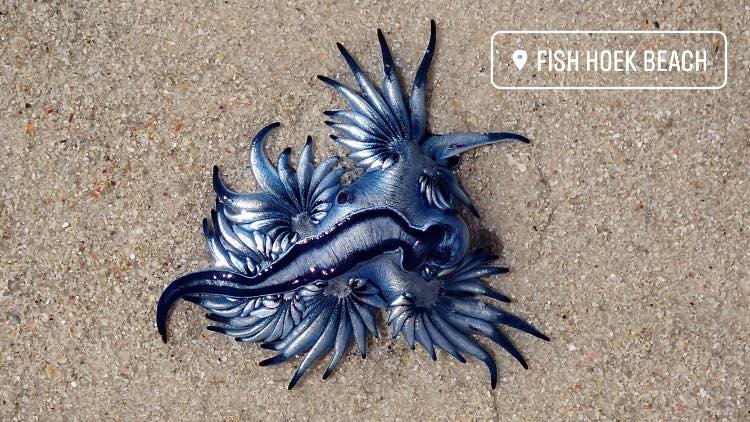
Beautiful Blue Sea Dragons Wash Up On Fish Hoek Beach, South Africa
Beautiful blue sea dragons (known scientifically as Glaucus Atlanticus) washed up on Fish Hoek Beach near Cape Town, South Africa, last Monday 16 November, and local resident Maria Wagener was there to capture these rare, wonderful photos (and video below) of the incredible blue creatures from the ocean. Maria, who has lived in Fish Hoek […]

Beautiful blue sea dragons (known scientifically as Glaucus Atlanticus) washed up on Fish Hoek Beach near Cape Town, South Africa, last Monday 16 November, and local resident Maria Wagener was there to capture these rare, wonderful photos (and video below) of the incredible blue creatures from the ocean.
Maria, who has lived in Fish Hoek for most of her life (and is the Admin for Fish Hoek Beach facebook page) told SAPeople “it’s the first time I’ve seen them. It was probably caused by the South Easterly wind as they float on top of the sea.”

The pelagic (neither close to the bottom of the sea, nor near the shore) sea dragon is also known as a ‘sea swallow’ because of the way it floats upside down just under the sea surface, and is carried by winds and currents across the sea.
According to MarineSpecies.org the distinctive, silvery blue mollusc is usually up to 6cm long with three pairs of arms, feeds on colonial hydroids, lives offshore and has a pantropical distribution (found in tropical regions in the north and south hemisphere).
The shell-less ocean slug (also known as a blue angel) feeds on colonial hydroids including Physalia (aka Portuguese Man-of-War or bluebottle), Porpita and Velella.

MarineSpecies warns that blue sea dragons “must be handled with care as it can give an extremely painful sting, due to the nematocysts taken from the prey species Physalia, which itself gives a nasty sting.” In fact, the sea dragon is coined “the most beautiful killer in the ocean” because apparently its sting is even more potent than its prey’s after storing their stinging cells in concentrated doses.
Fortunately for Maria (who told The Sun she regularly returns starfish to the ocean), she was wise enough to not try to pick up something she’d never seen before. The tide would’ve washed them back out to sea, she says.
Apart from over 20 blue sea dragons, Maria also found blue crabs that day – which she reports were “smaller than they look! Not bigger than a thumb nail” – as well as Portuguese men o’ war and blue shells called Janthina Janthina.

Maria told SAPeople the sighting last Monday was “incredible. Four unusual sea creatures on the same day. And all blue!”
She adds: “Probably has nothing to do with it but we had an earthquake around midnight that evening…”
Follow Fish Hoek Beach on Facebook.
WATCH Blue Sea Dragon washed up on Fish Hoek Beach
Video by Maria Wagener
